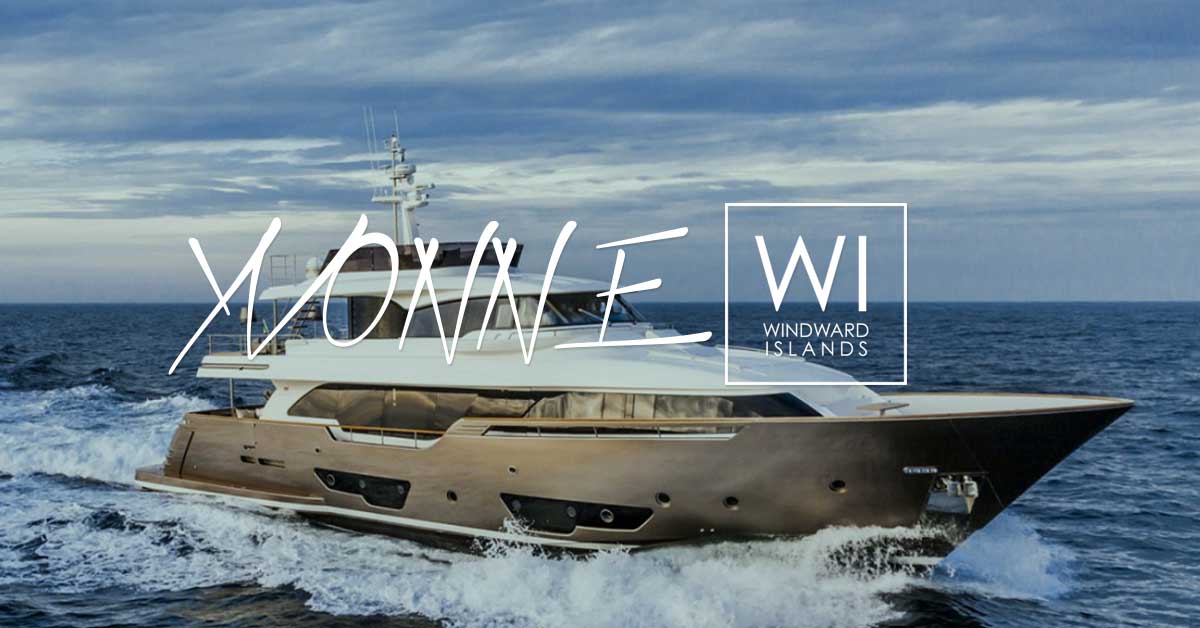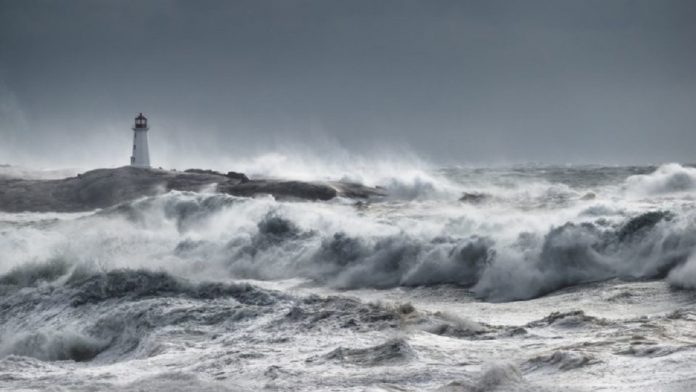
Luxury yachts are the ultimate symbol of indulgence in the world of boating. With their sleek designs, high-tech features and luxurious interiors, these vessels are ideal for those who want to experience the opulence of life at sea. However, when it comes to facing harsh weather conditions, even the most expensive yachts can be tested to their limits. The question is, how well do these luxury yachts perform in rough seas?
What can we call rough sea conditions?
Rough sea conditions refer to the state of the sea characterized by high waves, strong winds, and heavy swells. These conditions are common during storms or extreme weather events, making sailing or boating more challenging and dangerous. The height of waves during rough sea conditions can exceed 3 meters, which can cause vessels to pitch and roll, affecting the stability and safety of the crew and the yacht. Additionally, rough sea conditions can also cause high levels of water spray, making visibility difficult and reducing the effectiveness of navigation aids.
Should you expect to have rough conditions during a yacht charter?
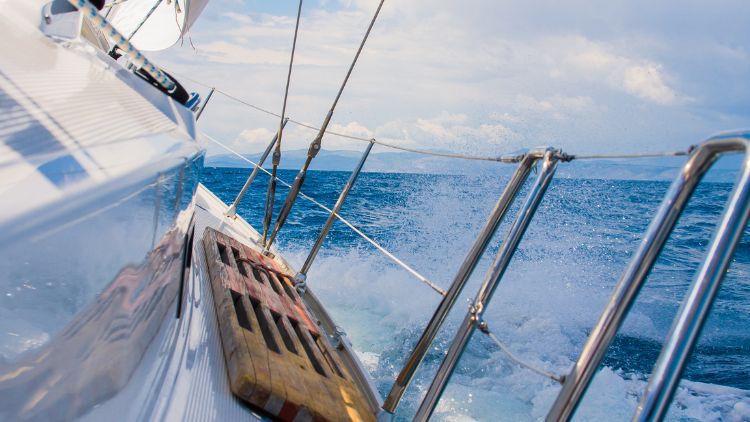
In most yacht charters, you will never experience rough seas
The majority of yacht charters take place in calm waters, especially in the Mediterranean and the Caribbean, which are top yacht charter destinations. These waters are known for their moderate sea conditions, with gentle swells and light winds. Moreover, yacht charters are planned in advance, usually during the best weather conditions, in order to provide you with a comfortable and safe sailing experience.
Crossing oceans usually involves a few days of difficult weather conditions
It is essential to understand that the ocean can be unpredictable, and you should expect rough conditions – especially if you’re crossing the ocean. The wind, waves, and weather conditions can change rapidly during a yacht charter. These changes can cause discomfort, seasickness, and even danger to those onboard the yacht. It is important to plan ahead for rough conditions and to take all necessary safety precautions to ensure a safe sailing experience.
What are the types of yachts that handle rough seas the best?
Generally speaking, the bigger the yacht, the better it handles rough seas
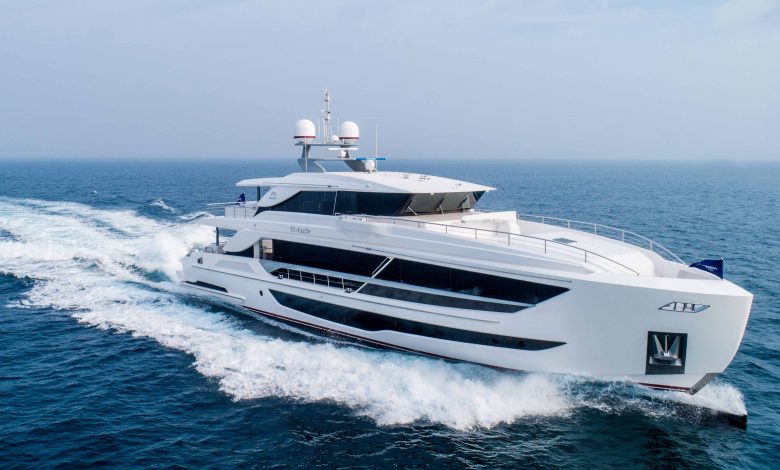
When it comes to navigating rough seas, larger yachts tend to fare better than their smaller counterparts. Specifically, displacement yachts -which rely on their immense weight to cut through choppy waters–are well-suited to rough seas. These yachts have deep keels and a tall bow, allowing them to plow through waves and reduce the impact of rough water. Additionally, yachts with a lower center of gravity can often navigate rough waters more easily. Of course, it’s important to note that no yacht is impervious to the elements; even the sturdiest vessel can have a tough time in particularly rough conditions.
Trimarans are known to handle the rougher seas safely
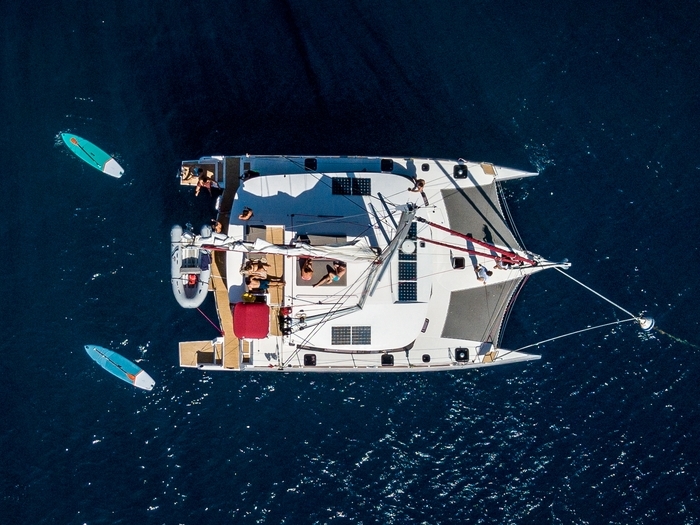
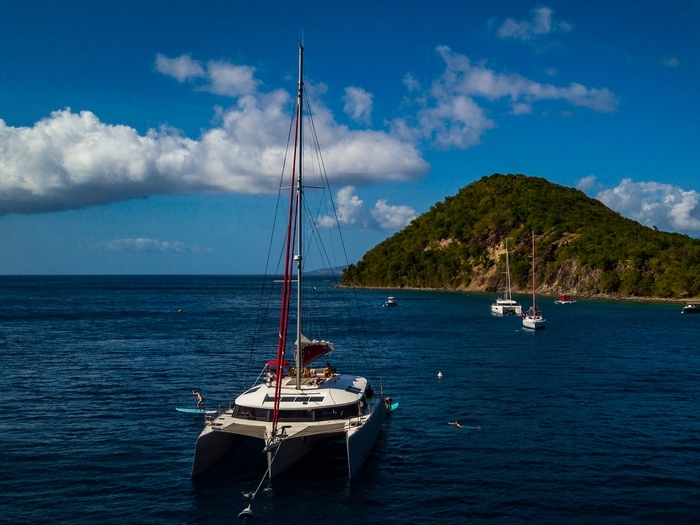
Trimarans are often considered to be some of the best performers in rough waters due to their design features. Their three-hull structure provides increased stability, reducing the rolling motion that can cause seasickness and discomfort. Additionally, the wider beam of trimarans gives them more surface area on the water, improving their stability further. Another benefit of trimarans is their ability to maintain speed in rough seas. The aerodynamic design of their hulls, coupled with the increased stability, allows them to cut through choppy waters while maintaining a relatively smooth ride.
Read also: The Caribbean To Mediterranean Sailing Routes: How To Cross The Atlantic Eastward
Most sailing yachts are resistant in difficult weather conditions
When it comes to sailing yachts, some types are better equipped to handle rough seas than others. One such type is the ocean cruiser, which is designed specifically for long-distance sailing in all conditions. Ocean cruisers typically have a heavier displacement, a deep keel, and a strong hull, which helps them to maintain stability and ride out storms. Another type that excels in rough seas is the bluewater cruiser, which is also designed for offshore sailing. These yachts feature a high freeboard, which keeps the cockpit and cabin drier in heavy seas, and a keel that is deep enough to provide good stability. Other types of yachts, such as performance cruisers or racing yachts, may not be as well-suited for rough seas, as their focus is on speed rather than durability in challenging conditions. It’s worth noting, however, that even the most seaworthy yacht can be overwhelmed in extreme weather, so it’s always important to exercise caution and good judgement when sailing in rough seas.
Motoryachts, especially superyachts and megayachts handle rough sea really well
When it comes to handling rough seas, luxury motor yachts come to the forefront with their exceptional seaworthiness and stability. Superyachts and megayachts, with their larger size and weight, offer a smoother ride in choppy waters. The deep-V hull design found in these larger yachts helps them cut through the waves with ease, reducing the impact of a rough sea. Additionally, these boats often feature advanced technology and stabilisation systems that further minimise uncomfortable motion.
Which types of yachts are the most uncomfortable in rough conditions?
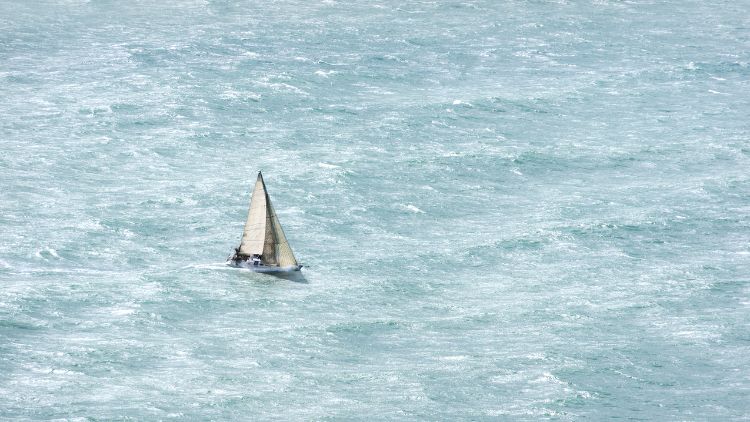
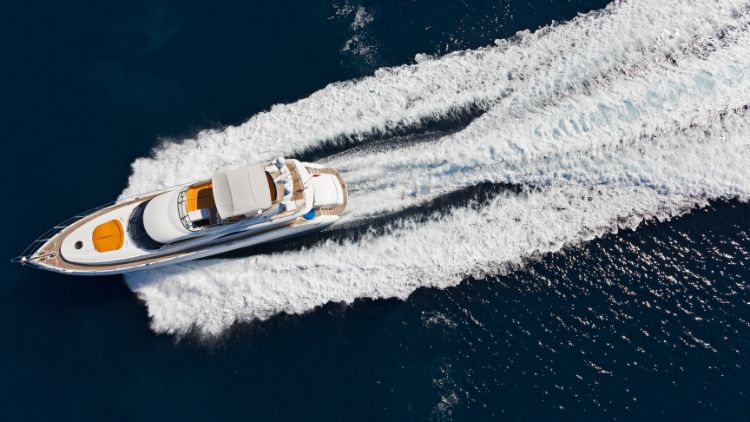
Catamarans are notoriously uncomfortable once the sea is getting too wild
When it comes to yachts and rough conditions, certain types are more prone to discomfort than others. Catamarans, for example, are often cited as being particularly uncomfortable during rough seas. This is due to their design – catamarans feature two parallel hulls that sit above the water. While this design can provide increased stability in calmer waters, it can pose problems when the sea gets choppy. Because the hulls are separate, rather than being connected like a traditional single-hulled yacht, the boat can bounce around more, leading to a rougher ride. Of course, the severity of discomfort will depend on a variety of factors, including the size of the catamaran, the strength of the waves, and the experience of the captain. However, if you know you’re headed into rough waters, it’s worth bearing in mind that a catamaran may not be the most comfortable option.
Monohulls will tilt drastically in bad weather conditions
Monohull yachts are generally considered the most uncomfortable in rough weather conditions. This is because monohulls are more susceptible to tilting or heeling dramatically when the waves become choppy, leading to a much more unstable and uncomfortable ride for those on board. In some cases, the boat may even list to one side or the other, causing occupants to struggle to maintain balance and potentially leading to seasickness. In contrast, multihull yachts such as catamarans are generally considered more stable and comfortable in rough conditions, as their wider hulls and lower center of gravity help them to better withstand the effects of wind and waves..
Read also: Best yachts for transatlantic: our selection and advices
What does it feel like to be in a yacht while the sea is rough?
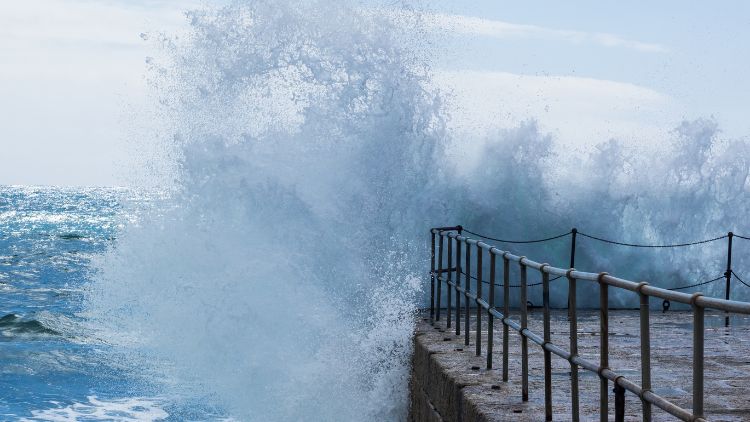
Everything around you is moving
Being in a yacht during rough seas can be a challenging and intense experience. The sensation of everything around you moving can leave you feeling uneasy and unsteady. The boat can sway and rock violently as it battles against the strong currents and waves. The sound of the wind and water crashing against the hull can be deafening, making it difficult to communicate with those around you. The constant motion of the yacht can cause feelings of nausea, dizziness, and disorientation, making it hard to focus on anything else. However, despite all this, being on a yacht during rough seas is also exhilarating. The feeling of being connected to the power of nature and the power of the boat as it cuts through the waves is awe-inspiring. It’s a reminder of how small we are in comparison to the vastness of the ocean and a testament to the strength and resilience of both humans and nature.
Sleeping and resting can be very difficult
The constant rocking motion of the vessel can make even the most experienced sailors feel disoriented and at times, nauseous. The sound of the waves crashing against the hull can be incredibly loud and unsettling, and the feeling of being tossed around with no control can leave you feeling very vulnerable. Sleeping and resting can be incredibly challenging, as the boat is constantly moving and it can be difficult to find a stable position.
You are more likely to experience sea sickness
Being in a yacht while the sea is rough can be a challenging experience, both physically and mentally. In fact, the motion of a yacht in rough seas can trigger the symptoms of seasickness, which include nausea, dizziness, and fatigue. The feeling of being tossed around by the waves can also be anxiety-inducing, causing a sense of vulnerability and helplessness.
It can be scary for inexperienced sailors to be caught in bad weather
Being in a yacht during rough sea conditions can be an overwhelming experience, especially for those who lack experience. The constant movement of the yacht as the waves crash against it can cause feelings of disorientation and seasickness. The sounds of the wind and waves can be loud and chaotic, making it difficult to communicate with other people on the yacht. The feeling of being tossed around by the waves can be disconcerting, and it’s not uncommon to feel a sense of helplessness and vulnerability in the face of the powerful, unpredictable ocean. Despite the challenges, it’s important to remain calm and focused if caught in bad weather, and to follow proper safety protocols to ensure everyone onboard remains safe.
How the crew on board your yacht can help you if you get caught in rough seas

A good captain can avoid rough weather conditions in the first place
If, despite the captain’s best efforts, you find yourself caught in rough seas, the crew on board your yacht can be a tremendous help. They are trained to handle a variety of emergency situations, including navigating through turbulent waters. In order to ensure everyone’s safety, the crew will likely advise you to stay below deck and secure any loose items. They will make sure that safety gear, such as life jackets and harnesses, are readily available and properly fitted. In addition, they will work together to keep the boat steady and make necessary adjustments to the sails or other equipment as needed.
The crew can give you advice during bad weather
The crew on board a yacht can be the difference between a safe passage and a disastrous one in rough seas. They are trained to handle bad weather situations and can provide vital assistance to the captain and passengers. The crew can guide the passengers to secure themselves and their belongings to avoid any accidents. They can also recommend the necessary changes in yacht operations, including changes in speed and direction, to survive the rough seas.
Experienced crew members can help you de-dramatise bad weather and eventual seasickness
Experienced crew members know how to handle unpredictable weather conditions, and their presence can help you feel more confident and reassured at sea. In the event of seasickness, the crew can offer tips and remedies to help alleviate discomfort, and they can also help distribute tasks and responsibilities amongst the crew, ensuring that everyone stays safe and accounted for.
It’s much easier to be caught in bad weather conditions with a staff than on your own
If you happen to find yourself in the midst of rough seas while sailing, having a competent and skilled crew on board your yacht can make all the difference. They can provide essential assistance that could mean the difference between safety and danger. For example, they can help steer the vessel, hoist and lower sails, and handle ropes and lines. Additionally, they can monitor the weather conditions, keeping a close eye on changing patterns and alerts from the coast guard, and take necessary safety precautions such as securing loose objects and ensuring that everyone is wearing appropriate safety gear. Having a team of experienced crew on board can help keep everyone calm and reassured during a stressful and challenging situation at sea, and help make the journey as smooth as possible.
Read also: Where To Sail During The Hurricane Season?
Conclusion
In conclusion, while luxury yachts are designed for an experience of opulence at sea, their seaworthiness in rough seas is dependent on various factors. The hull design, weight distribution, and stability systems are major determinants of how well a yacht will perform in adverse weather conditions. Additionally, technological advancements have enabled yacht owners to access real-time weather and sea condition information, allowing them to make informed decisions and take the necessary precautions to ensure their safety. As such, it is possible to mitigate the risks associated with rough seas, and yacht owners can enjoy their luxury vessels in a safe and comfortable manner. However, it remains vital that yacht owners invest in the necessary safety equipment and hire experienced crew members who can handle emergencies that may arise while navigating rough seas. With the right measures in place, luxury yacht owners can have the ultimate indulgent experience at sea, irrespective of the weather conditions.



